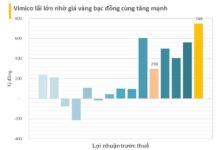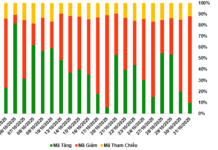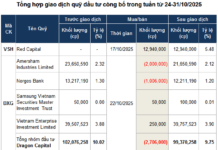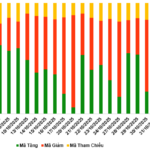The Ho Chi Minh City Department of Construction has proposed to the People’s Committee that the minimum floor space for rented rooms be set at 5 square meters per person. This proposal aims to balance social welfare and living space for renters, but it has caused concern among both landlords and tenants.

Most rented rooms in the outskirts of Ho Chi Minh City have an area of 9 to 12 square meters.
After a long day at work, Do Van Ly and his wife, employees at PouYuen Vietnam in Binh Tan District, finally arrive at their rented room. Despite earning a relatively decent income as workers, the couple prefers to rent a cheap room. “We plan to work here for a few more years and then return to our hometown, where our parents live,” Ly shared.
Many workers are concerned about the new regulation proposing a minimum room size of 5 square meters per person.
Their current room, measuring over 10 square meters, barely fits a small bed, a refrigerator, and a kitchenette, with a loft used for storage. Fortunately, their landlord has not increased the rent over the years, making it affordable for the couple. “I’m paying 1.1 million VND per month for this room. If we were to rent a larger room, the price would double, which we cannot afford,” Ly confessed.
According to a survey by the Ho Chi Minh City Department of Construction, one out of three rented housing areas in the city does not meet the average floor space requirement. These areas accommodate 1.3 million workers, who often endure cramped, damp living conditions and face a high risk of fire hazards.

Many workers have to save money to support their children’s education, so living with fewer people and renting additional rooms would be a financial burden.
A survey by the Nguoi Lao Dong newspaper found that most rented rooms for laborers in the outer districts of the city were built decades ago. These rooms typically measure between 9 and 12 square meters, housing 3 to 4 people, usually a couple and their children or siblings.
Several landlords supported the proposal, believing it would provide a better living environment for workers and reduce fire hazards in rented housing areas. However, others expressed concern about the financial burden of renovating their properties to meet the new standards.

Most rented rooms are cramped and filled with belongings.
One landlord shared a common concern: “Most worker families consist of a couple and their two children. If they have to rent two rooms to meet the new standards, their housing expenses will double, which will be a significant burden.” Many suggested that this regulation should only apply to newly constructed rented rooms, with existing ones being given a grace period for landlords to make the necessary improvements.
Workers spend 10% – 15% of their income on rent
According to the Ho Chi Minh City Labor Federation, 70% of employees in the city’s enterprises are from other provinces, and 50% of them, or 1.3 million people, require housing. Most of them rent rooms from households or individuals, with an average room size of 14 square meters and a monthly rent of 1.6 million VND, shared by about four people. Others rent entire houses for their families, paying 2-3 million VND per month. On average, workers spend 10% – 15% of their income on housing.
Proposed Planning for Adding 2 New Cities in Ho Chi Minh City
According to Architect Ngô Viết Nam Sơn, Ho Chi Minh City should consider planning two cities within the city in the south and north.
Three Economic Growth Scenarios for Ho Chi Minh City in Q1 2024
At the socio-economic meeting reviewing the results of January and setting the goals for February 2024, held this morning (1/2), the Ho Chi Minh City Institute for Research and Development has presented three economic growth scenarios for the first quarter of Ho Chi Minh City.









































